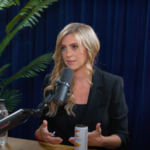Blog Post
Feminism’s self-defeating about-face on porn
By Jonathon Van Maren
“Pornography is the theory,” renowned feminist Robin Morgan once wrote, “rape is the practice.”
Indeed, feminists used to widely understand that pornography was, at its very best, dehumanizing and degrading, a product by men and for men that portrayed women only as objects of male desire. At its very worst, it was a gory celebration of the destruction of the feminine, with women being beaten, raped, humiliated, and otherwise assaulted for the perverse pleasures of misogynists who claimed that their woman-hating was a “fetish.”
Today, however, feminists are supposed to be “sex-positive,” which means they have to support pornography, because with over 80% of the male population viewing it, resistance is futile.
I remember a debate on pornography in one of my first political science classes in university—out of the entire class, only myself and one other guy were opposed to pornography. Most of the guys sat quietly, trying to avoid contributing to the discussion, while a few of the girls were the most vociferous defenders of this filth—almost as if they had something to prove.
Pornography, our new sexual dogmas say, is harmless, if not beneficial. And when I asserted in a number of articles that pornography fuels rape culture, the backlash from guys who couldn’t stop looking at porn was quick and angry.
So I began contacting experts in the field, people who had studied the impact of pornography on men and women. The most revealing and chilling interview I conducted was with Dr. Mary Anne Layden, director of the Sexual Trauma and Psychopathology Program in the Department of Psychiatry at the University of Pennsylvania. I had cited her work on pornography and violence before, and wanted to see what sort of things her research had uncovered.
Why, I asked Dr. Layden, did you start researching the links between violence and pornography?
“When I started as a psychotherapist, just about thirty years ago, I started treating patients who were victims of sexual violence and felt a special call to the damage that sexual violence did to these patients,” she replied,
When I had been doing the work for about ten years, because I’m a little bit of a slow learner, it occurred to me that I had not treated one case of sexual violence that didn’t involve pornography… some were rape cases, some were incest cases, some were child molestation cases, some were sexual harassment cases – in all of these different kinds of cases, pornography showed up in every single one.
So I said there seems to be some connection here. Over time, I got interested in what is common in the perpetrators of sexual violence because I realized we were never going to solve the problem of sexual violence by treating victims who’ve been damaged by the problem and treating them one at a time and trying to put them back together. There weren’t enough therapists in the world. There were too many victims in the world. We couldn’t solve this by pulling them out of the river one at a time. We were going to have to go upstream and see who was pushing them in.
And as Dr. Layden discovered, it was the porn industry that was pushing people into the river. Men are not born rapists, she pointed out to me. But for some reason, many are increasingly justifying sexual violence. Why? Because pornography has turned the bodies of women and girls into a commodity. It is shaping the way men see women.
“It’s a product,” Dr. Layden said, her voice getting more emphatic.
This is a business and I think that a lot of pimps would stop doing this if there wasn’t any money involved, but it’s a business and as soon as you tell somebody it’s a product, as soon as you say this [is] something you buy, then this is something you can steal. Those two things are hooked. If you can buy it, you can steal it, and even better if you steal it because then you don’t pay for it. So the sexual exploitation industry, whether it’s strip clubs or prostitution or pornography, is where you buy it. Sexual violence is where you steal it – rape and child molestation and sexual harassment is where you steal it.
So these things are all seamlessly connected. There isn’t a way to draw a bright line of demarcation between rape and prostitution and pornography and child molestation. There are not bright lines of demarcation. The perpetrators are in a common set of beliefs, and when we look at the research we can see some of those common beliefs, so that we know that individuals who are exposed to pornographic media have beliefs such as [thinking that] rape victims like to be raped, they don’t suffer so much when they’re raped, ‘she got what she wanted’ when she was raped, women make false accusations of rape because it isn’t really rape, sex is really either good or great and there isn’t any other option other than good or great, no one is really traumatized by it.
All of these are part of the rape myth. People who use pornography accept the rape myth to a greater degree than others. So we have a sense that pornography is teaching them to think like a rapist and then triggering them to act like rapists.
Pornography, like all other products, has done to the female body what economics always does to any product: If you commodify something, you cheapen it. It’s really that simple. But when your marketing strategy is inflaming lust and appealing to power by degrading women, there are devastating results. As Dr. Layden pointed out to me, we even stop seeing each other as human.
“When you cheapen sex and you cheapen women’s bodies, when you treat people like things there’s a consequence and one of the consequences is sexual violence but one the consequences is also relationship damage,” she pointed out.
There’s an interesting series of studies that actually highlights a bit of the phenomena of how this works. They were showing people just mildly sexualized pictures. They were men and women in swimsuits, men and women in their underwear, sort of relatively mild sexualized pictures and they showed them either upside right or upside down and looked at the processing in the brain, because it will display a phenomena of which part of your brain you’re using to process that picture that you see.
What we see with men, when people look at men, and look at them in their swimsuits or in their underwear, they’re using the part of their brain that processes humans and human faces but when we look at women in their swimsuits and their underwear we use the part of our brain that processes tools and objects and when you process a woman as a tool or an object you use. The rules that we use when we deal with tools or objects is if it’s not doing its job then throw it away, get another one.
So the feminists years ago said these men are treating women as sex objects and we thought that was a metaphor. It wasn’t a metaphor. It was an actual statement of reality, that they’re using the part of their brain which they use to process objects and things and there’s a consequence in the society when you start treating sex as a product and women as a thing.
Those who point these things out, of course, and those who oppose porn, are condemned as old-fashioned, prudish, and “anti-sex.” When I reminded Dr. Layden of this, she was decidedly unimpressed.
The desire for love is built into us. [One of my colleagues] said, ‘The real damage is that it threatens the loss of love in a world where only love brings happiness.’ That summarizes what we are doing, that everybody is hardwired to love and be loved. That’s what feeds our hungry heart, and we have a generation who are starved and have hungry hearts and yet they are eating the sexual junk food and becoming sexually obese because they’re so starved they would eat junk food if that’s all that’s available to them.
And so partly we need to have people talk about the glory of good sex, the wonderfulness of good sex, of how it bonds committed couples together and helps them keep their promises to each other, that there is a thing called good sexuality that is enhancing and enlivening and is love-based, but all of this sexual junk food that is out there is not it.
In short? Those who oppose pornography are not anti-sex. They are simply wise enough to recognize that pornography is poison. When used as a substitute for love, it is the equivalent of giving salt water to a man dying of thirst—it will merely inflame the desire further without bringing any satisfaction. To Dr. Mary Anne Layden, this is self-evident. And she intends to make sure as many other people as possible see it that way, too.
“If I said to people, ‘I want you to eat healthy food and don’t go to McDonald’s,’ they wouldn’t call me anti-food,” she said. “They would say you just want to promote healthy food and you don’t want people to go see that Supersize Me movie and find out if you eat McDonald’s every day for 30 days you’ll have a fatty liver. Well that’s what I want to do with sexuality. I want to promote healthy, loving, enhancing, soul-feeding sexuality, not sexual junk food.”
And the way to do that? With sky-high rates of porn addiction, is it possible? Dr. Layden has so many ideas that they come out in a rush.
“I think we’ve got to educate ourselves, we’ve got to tell the truth to others, you’ve got to speak truth to authority because once you know this stuff if you’re silent, silence is complicity,” she says.
We’ve got to go in to our schools and our libraries and say you’ve got to protect our children, we’ve got to say to our governments you’ve got to stop spreading permission-giving beliefs and that means don’t legalize prostitution. It tells men that it’s fine and more men will go to prostitutes. We’ve got to have laws against things that damage people; we’ve got to have outrage in this society when sexual violence is swept under the rug, when a professional athlete does it.
We’ve got to come together and have the journalists, the lawyers, the parents to get together as a mighty team and say this society is worth saving, our children are worth saving, sexuality is sacred. We’ve got to do it together and so it takes a concerted effort … When I hear people say we can’t put the genie back in the bottle I say fifty years ago 60% of the people in New York City smoked, today 18% in NYC smoke. Put the genie back in the bottle. We can do this one as well and it’s worth doing.
READ THE REST OF THIS COLUMN AT LIFESITENEWS.COM








